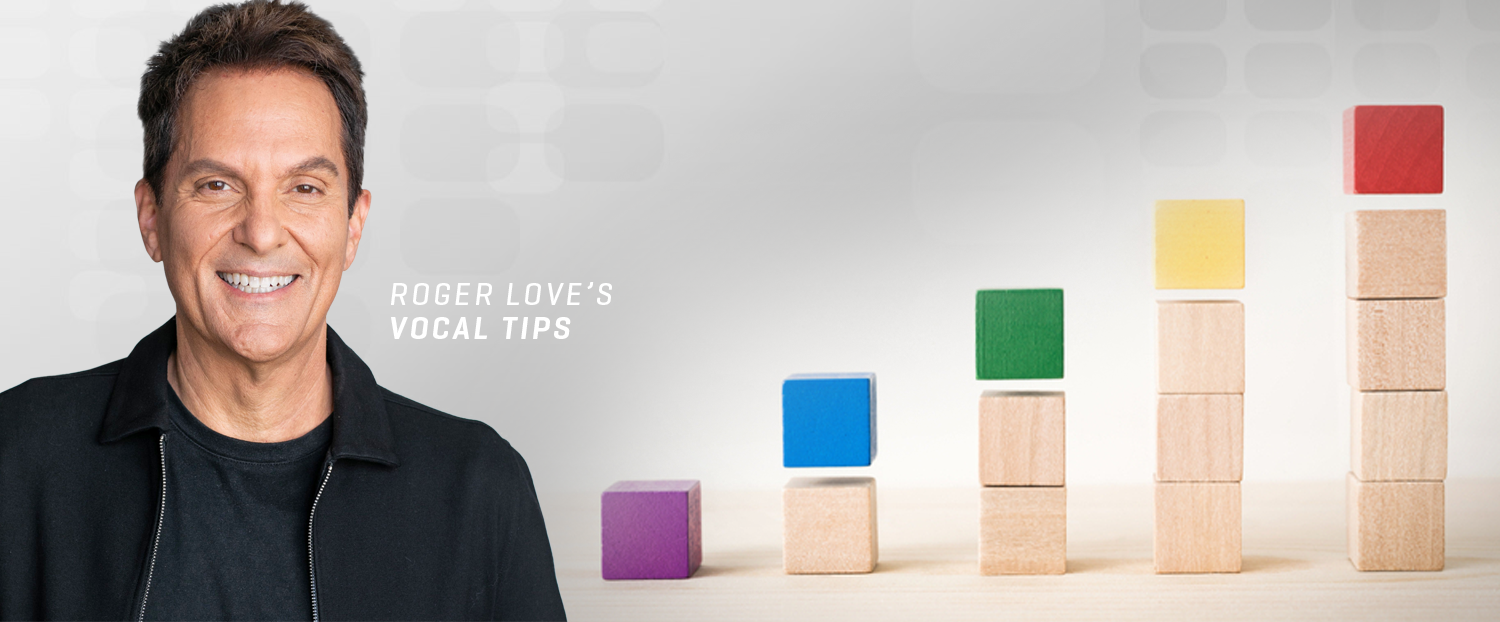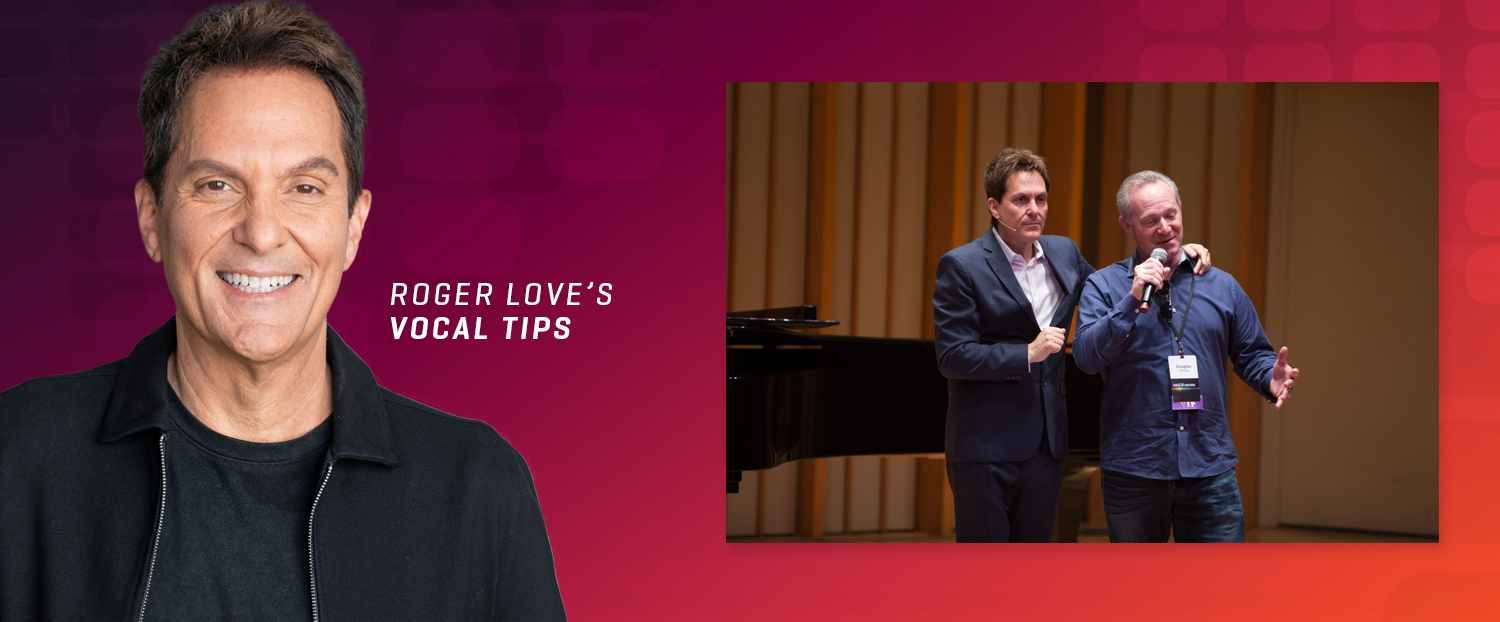Summary
In the earlier video I made about vibrato, I taught you that using this technique when you sing will help you sound professional, and add variety and style to your voice and music.
After 75,000 people watched that first vibrato lesson and asked for more, I decided to make this blog.
You asked for it…so here it is! Welcome to my “Guide to Advanced Vibrato Techniques.”
Please enjoy!
Did you like this episode?
Please spread the “Love” by sharing this with your friends. Remember, I’m working to save the world one voice at a time, starting with yours. You’re my family now, and we need to work together to extend our mission and reach. The more you share, the more I can share with you, and we can actually help people globally find their voices and change their lives for the better.
Ready for your best life? Find your singing solutions here.
[apss_share]
Play the Audio of this post:
TRANSCRIPT
Hi, I’m Roger Love, celebrity voice coach and author of the bestselling book Set Your Voice Free. Today, I want to talk about advanced vibrato techniques. Now, first, let me explain what vibrato is for those of you that are not sure. When you listen to a singer hold out a note, they are either holding it out straight, [sings], or there’s a little wiggle in it, [sings]. That wiggle is called “vibrato,” and it’s a very, very specific type of wiggle, one that starts on the note, [sings], and then goes a little bit higher than the note, and then goes a little bit lower than the note, and then goes higher than the note and lower than the note.
So, when you’re doing vibrato, you literally are going [sings]. That wiggle is going above and below the main note you’re singing. Why in the world would you want to go up and down when you’re trying to hit a note? Why would you want to wiggle like that? Here’s why. When people listen to singers, the number one thing that makes the listener decide whether the person is a good singer or a bad singer is actually vibrato. This is scientifically proven. People can’t hear all the little subtleties in the voice. They can’t hear when you’re a little bit too high, which is sharp, or a little bit too low, which is flat. But when you’re making a sound that has a wiggle in it like that, [sings], they hear it, and they are affected by it, and the sound makes them feel a certain way. And they have already pre-judged in their minds that the singers that have vibrato are good singers, and the singers that do not have vibrato are not good singers, never having been trained, not born with vibrato. You do not want to fit into that category.
You need to sound like a great singer, even if you have sort of an average voice. Maybe you don’t think you’re Mariah Carey, that you’re Ariana Grande, that you’re Bruno Mars, yet. If I add the right kind of vibrato to your voice, the people listening to you will think, “Wow, she reminds me so much of Ariana Grande. He reminds me so much of Bruno Mars,” because that’s how their ears pick out that very, very distinctive sound of vibrato.
OK, so now, I want to teach you more about it, and then I want to give you some ideas how you could make it happen in your voice, advanced ideas. First of all, sometimes, when you hear people make a wiggle, that wiggle doesn’t go higher and lower than the note. Check this out. Here is straight, [sings]. Now, here’s a wiggle, but I’m wiggling on the same note, [sings shakily]. I’m not going [sings]. I’m going to slow it down, [sings], higher and lower, same note, [sings shakily]. Sounds like a machine gun just hit your ear! That’s what a lot of people try to use and masquerade as if it was vibrato, but it isn’t vibrato, because by definition, if you’re just wiggling the same note, “pleaaase, IIII caaan’t”—then you sound like you should get back in the field with the rest of the sheep, instead of onstage in front of a microphone and having people listen to you. Vibrato, by definition, is not that blurting of one note, [sings shakily]. It is going up and down, [sings].
So, if you were on a piano, the vibrato would be like this. I’m one note on a white key, one note on a black key, and you’d be going [piano imitation] and then you’d be at the bottom, [piano imitation]. You’d actually need three fingers to make vibrato on a piano. How many fingers would you need to make the sheep wiggle? [Sings shakily] one, so it’s not vibrato. And yet, a lot of singers—I mean, I grew up, and Stevie Nicks sounded like this, “uhuhuhuh, yeah, my love, and I was aaaaaalll,” and Madonna sounded like that, “uhuhuhuhuh,” that they got into thinking that was vibrato, because nobody told them any otherwise. So, I’m telling you otherwise.
You can’t do that sheep thing. You can’t do that goat boy thing from Saturday Night Live. You’ve got to go up and down. So, what’s the main thing that takes you from going [sings], that fast one-note thing, to a vibrato that has melody, that goes up and down? The way you breathe. The way you breathe makes all the difference in the world.
Most people who are doing that sheep fake vibrato are tightening their stomachs, so with the stomach tight, they’re basically holding their breath. So, when you try to make vibrato, which is an air thing, you need control over the air to make vibrato. But if your stomach is tight, you don’t have control over that air. So, the first advanced technique to get better at vibrato is to finally make sure that you are breathing in a way that makes vibrato happen. What’s that way? Breathing in through the nose, pretending you have a balloon in your tummy—you fill up that balloon with air, and then while you’re trying to make that vibrato, you let your stomach come in slowly, [sings]. You can’t make vibrato when your stomach stops. Watch this, [sings]. You see, I’m only making vibrato while my stomach was coming in. So, stop trying to make vibrato with a stationary stomach. Stop trying to make vibrato with your muscles all tight. You have to breathe in through your nose, let your tummy come forward, and then practice the vibrato, [sings], by letting your stomach come in.
Now, when I make vibrato, I literally feel air bursts hit the very back part of the roof of my mouth, and I want you to experience that right now for yourself, so you’ll understand the difference. So, make a fist and put it right here, this part of your body, and then take your hand right here and put it on top of your fist. You’re going to go like this, [sings]. You’re literally going to push the top part of your tummy in, [sings]. Do it with me now, [sings]. Now, next time you’re going to do it, you’re going to not focus on what your hands are doing. You’re going to focus on, “Am I feeling the air bursts hit the very back part of the roof of my mouth?” The air that I’m pushing—do I feel it hit right here? Because that’s where vibrato feels. And if you’re not feeling any air hit here, you’re not making vibrato, because when I go, [sings shakily], I don’t feel it there, but when I go like this, [sings], I feel the air bursts come from my lungs and head up to the top part of the roof of my mouth. Do it, and focus on whether or not you feel it. Let’s do it right now, [sings]. Do you feel the air hit there? Or try this, [sings], called the finger shake point, [sings], trying to make one beat for every time your finger goes, [sings].
So, you can try it with this or with this, but the goal is, can you make the air bursts hit the top part of the roof of the mouth? Also, why would we not want that fast sheep/goat-like thing? Well, when your vibrato is too fast, or that fake vibrato, when it’s fast, it makes your voice sound nervous. It makes you sound like you’re a nervous singer. So, when you hear somebody sing, “Pleeeaase goooo, IIII caaaan’t”—it’s not only aggressive and unattractive. It makes you sound nervous, and it literally makes the people who listen to you feel more nervous, whereas vibrato, which has actually been clocked at six oscillations per second—check this out. That means that, if it was a wave, it would go up and down and up and down and up and down six times in a second, and that sounds like this, [sings]. Here I’m going to slow it down a little. I’m going to go to four, [sings]. Now I’m going to three, [sings]. Now I’m going to go to two, [sings].
You see that the speed of my vibrato actually creates different emotions. So, when you hear someone with a slow vibrato, “I loooove you,” you’re thinking, “How did that person escape from the old age home, and what are they doing on the corner singing?” because their voice sounds old. Their voice sounds tired. So, the slower your vibrato, the more it aggravates your listeners. The faster your vibrato, the more it starts to make your audience nervous. [Sings], six, nice. I’m going to go faster now. I’m going to go to eight, [sings]. It starts to sound a little nervous. I’m going to go a little faster, even, [sings], [sings]—again, off the charts, nervous, irritating—that’s not the kind of sound that’s going to make people think, “Wow, you’re quite the singing star.” So, the speed of the vibrato does make all the difference.
Also, you’re going to listen to people that you love. I want you to start paying attention to the singers that you love. Listen to Ariana Grande. Listen to Bruno Mars. Their vibrato is actually exactly on the money of six oscillations per second. You don’t have to judge it. You just have to listen to it and try to imitate it. So, the goal for vibrato is to learn to get the right speed from it. How? By making sure that you’re letting your stomach come in when you’re making vibrato, by making sure that you feel the air bursts hit here.
Also, when you’re in the early stages of vibrato, you’ll only be able to do it when you hold out long notes, “Gooooo,” but as you get used to it, and as you play with it, you’ll be able to put vibrato in on little, tiny words, “And so I hear you call, and now I’ll go because I can, and I’ll put vibrato in some short words,” and then you can just have it as a beautiful seasoning that really makes people understand that your voice is special. Your voice is a little different.
Here’s something else you didn’t know about vibrato. It’s scientifically impossible to hold out a note and keep it straight without going flat, without going too low, [sings, goes flat]. It just naturally goes flat. It goes low. “Pleeeaaaase”—it just starts to wander down, and now you’re singing, but you’re on the wrong note. Vibrato was originally created just for that reason, so that, instead of trying to sing one note, [sings, goes flat], vibrato is three notes, and it’s like a shotgun. When you try to shoot skeet with a bullet, boom, it’s way harder to hit it, because the bullet’s only this big. When you get a shotgun out, and you hit skeet, the pellets in the shotgun open up, and they spread out, so now you really can easily hit your target. It’s the same thing with vibrato. By having three notes, it’s like a shotgun blast. Now, the note that you want to hit is somewhere in there. Good shootin’ there! So, you don’t have to hit the note so perfectly if you have vibrato. Vibrato keeps you in the right place.
So, check this out. My note is here, [sings], going flat, [sings]—now I can hold it for as long as I want and never go to the wrong note, because I’ve created this wave that keeps me on pitch. That’s one of the main reasons we use vibrato. It keeps us on the top side of the pitch, which makes us sound happier, which makes us sound thicker, which makes the voice more resonant, and it stops us from singing the wrong notes. It gives us a wider band where we’re not making any mistakes, so all of the notes you sing when the vibrato happens—it just makes your voice sound more beautiful, more full, more round, more on the notes.
I really want you to think about vibrato like this. If you’ve given up vibrato because you think you had to be born with it, that’s an absolute lie. No one is born with vibrato. Everyone, when they are young, who gets vibrato, finds someone that they are listening to who has beautiful vibrato, and they imitate it, and they practice, and they imitate, and they imitate, and every time they’re singing along with a great singer, they’re imitating it, and they’re teaching themselves vibrato. No one—Ariana Grande, Bruno Mars, Beyoncé—no one was born with vibrato. They imitated it, and that’s going to be your ticket to go from sounding mediocre and flat and off-pitch to sounding like you were trained or born with an amazing voice that not only hits the notes, but the resonance of the voice is beautiful, round, full, thick, and strong.
And that’s the key to having advanced vibrato. Play around with this. Focus on the breathing. Understand that you can do it if you imitate great singers and you stay with the tips that I’ve given you today. So, until the next time we meet, [singing] “I’ll be listening for youuuuu!” See you then!
Get 4 Free Voice Training Videos That Reveal How You Can Discover Your Perfect Voice
By submitting your email address, you agree to receive emails for this training and special offers. Unsubscribe, anytime.




